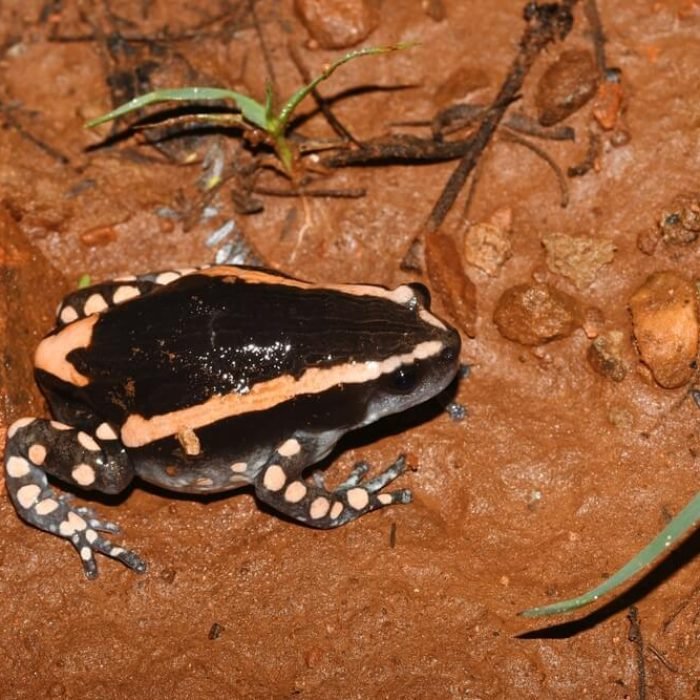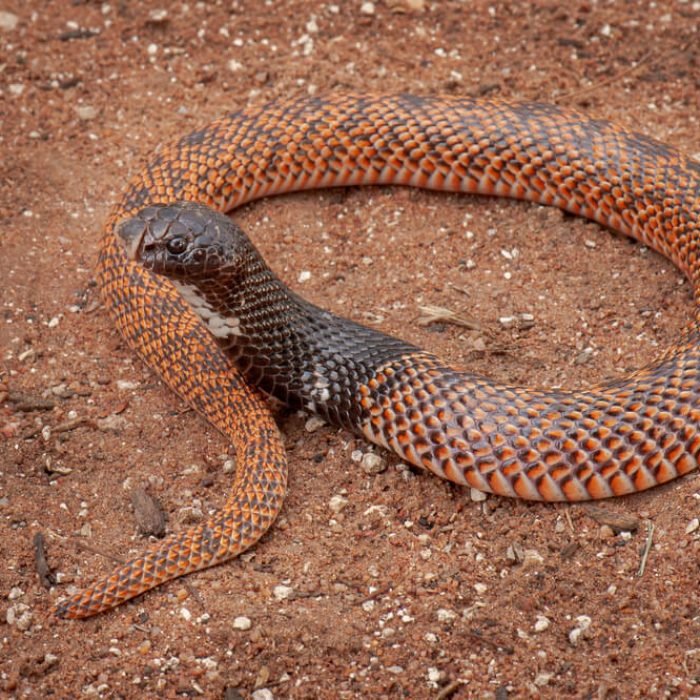Banded Rubber Frog
- Phrynomantis bifasciatus
- IUCN Status: Least Concern
- Threat: dangerous
- Venom/Toxin: unconfirmed
- Trend: unconfirmed

General Information
The banded rubber frog (Phrynomantis bifasciatus) is a species of frog in the family Microhylidae.
Description
Characteristics: Greyish underside with white spots (sometimes not apparent). Skin is smooth and rubbery. Arms and legs have reddish spots. To distinguish between gender, the male has a darker throat.
The female can reach a maximum size of 65 mm whereas the tadpoles can reach a size of 37 mm. The maximum size of the male is yet unknown, but sizes differ from 45 mm to 68 mm.
Fun Facts
The banded rubber frog releases a milky toxic substance through their skin. This substance is toxic both to other frog species and humans.
Ecology & Behaviour
It is a species of savannah woodland and grassland. It also occurs in agricultural habitats.
Reproduction
It breeds in temporary pans and pools, and in flooded grassland and small dams.
Distribtion & Habitat
It is found in central and southern Africa. Its natural habitats are dry savanna, moist savanna, subtropical or tropical dry shrubland, subtropical or tropical moist shrubland, subtropical or tropical dry lowland grassland, subtropical or tropical seasonally wet or flooded lowland grassland, subtropical or tropical high-altitude grassland, intermittent freshwater lakes, intermittent freshwater marshes, arable land, pastureland, water storage areas, ponds, and canals and ditches.
Interaction With Humans
It is frequently found in the international pet trade.
References
Share:
- Phylum: Chordata
- Class: Amphibia
- Order: Anura
- Family: Microhylidae
- Genus: Phrynomantis










